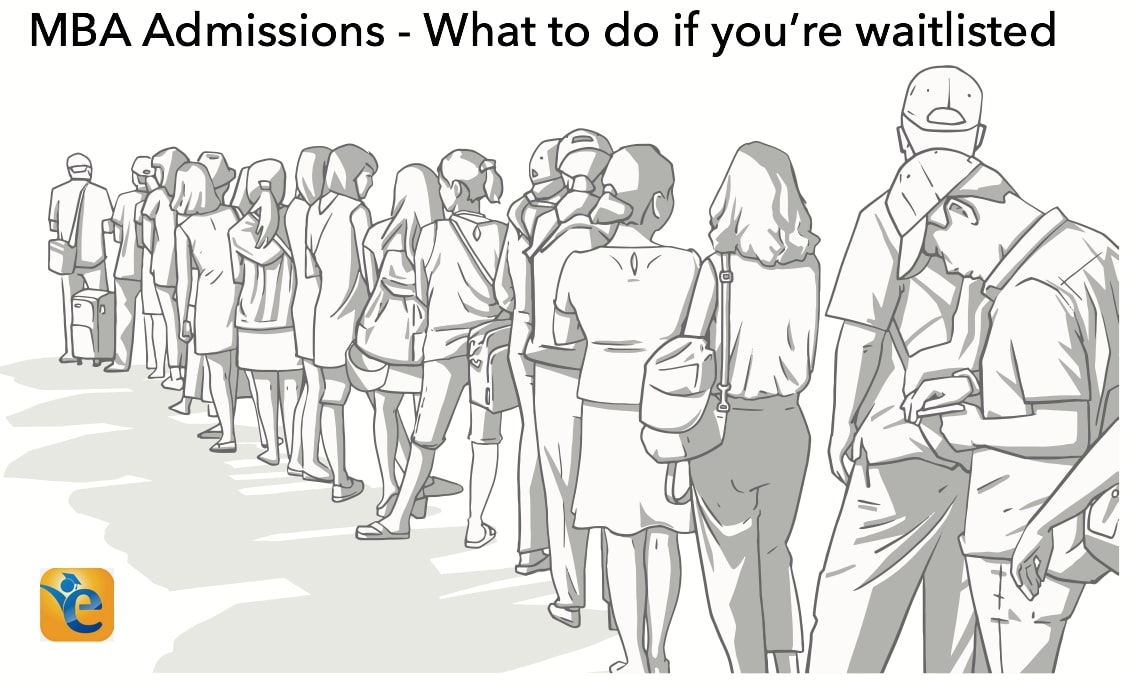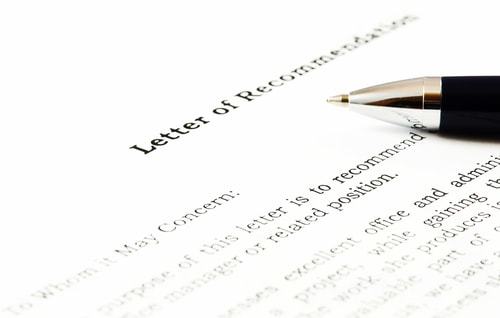You worked really hard on your MBA application. You made your profile as appealing as possible. You excelled at your work and received good recommendation letters, aced the GMAT, wrote compelling essays, and gave good interviews. After a grueling MBA admissions process it’s time to expect admits from your target business schools. Some business schools are within your reach and some are a stretch. As soon as the results start coming, you might witness another hurdle towards getting an admit. This hurdle is otherwise known as the MBA waitlist or business school waitlist.

Being on a business school’s waitlist could be a confusing time. The most common feeling is the one expressed in the meme below. Moreover, there are so many questions which arise at this time.

Should I wait or not? Should I contact the admissions committee and ask for a reason? Should I improve any aspect of my application? If yes, what and how should I improve?
In this article, we have answered all these questions and have included tips to help you if you’re waitlisted by a business school for MBA admissions.
Patience is not simply the ability to wait – it’s how we behave while we’re waiting – Joyce Meyer
Here are five things you should do while on a business school’s waitlist.
- Absorb the information and spring into action – Be proactive
- Respond to the business school after due diligence – Accept or decline the MBA waitlist offer
- Follow the business school’s guidelines regarding MBA waitlist
- MBA Waitlist – Update the admissions committee periodically
- Improving your weak areas to get off the business school waitlist
Absorb the information and spring into action – MBA waitlist
Okay, so a business school decided to keep you on its MBA waitlist. Now what? Take a deep breath and absorb this information. By absorbing this information, we mean that you should realize that this is not a rejection. It means that the admissions committee wants to continue reviewing your application. Consider this an opportunity and spring into action. Business schools like proactive candidates. Take a day or two to review your application for this business school which will help you pinpoint any gaps in your application.
Respond to the business school after due diligence

Once you are done reviewing your application, you will be in a better position to decide whether you want to wait or not. If you envision yourself attending this particular business school, then it would make sense to accept being on the waitlist.
The yield rate of the business school which has waitlisted you can also help you decide. Here are the acceptance rate and yield rate of top business schools. Yield rate is the percentage of students who choose to enroll in a particular program after being offered admission. A business school with a high yield rate is less likely to dig in its waitlist. Harvard Business School is a prime example of a high yield rate (91% in 2017).
But, whatever you decide, weigh in your options first and then respond to the business school as soon as possible. It would only take a few clicks to convey your decision.
Follow the business school’s guidelines regarding MBA waitlist
If you choose to accept to be on the business school’s waitlist, then make sure to follow their guidelines religiously. Some business schools are open to receiving additional information and some would even explicitly ask you to improve a specific part of your application. Duke’s Fuqua School of Business even hosts webinars for waitlisted candidates.
On the other hand, some business schools would like you to just wait and not communicate.
MBA Waitlist – Update the admissions committee periodically

If your business school is open to receiving MBA waitlist updates, then it is really important to time your updates. The admissions committees have to deal with thousands of applications and your constant updates will end up pestering them. Therefore, send 2-3 ‘short and sweet’ updates on how you have improved since you ended up on the MBA waitlist.
According to Stacy Blackman, founder of Stacy Blackman Consulting, an MBA admissions consulting firm, you shouldn’t send an update letter immediately. You should wait at least a month, as this time will allow you to show a genuine improvement in your application.
Moreover, we would suggest marking the deadline for the next round of that business school. Send the second update approximately 2 weeks before the deadline. Two updates would be enough. Keep a third update reserved for important events like promotion, award, or more leadership opportunities.
How to get off the business school waitlist?

To get off the business school waitlist it is important that you show constant improvement in your profile. Some business schools would ask you to improve a specific part(s) of your application. In that case, work on that part of your application and update the admissions committee. In case, the business school hasn’t defined what you need to do then there a few things you can send as updates to the business school’s admissions committee.
Please note that the updates should be only related to those portions where you have improved. A 300-400 word e-mail should be sufficient to make your case.
MBA waitlist acceptance rate – GMAT score
GMAT score has a 22% weightage in your MBA application. In case your GMAT score and you think it might have been a reason for your waitlisted status then you should definitely retake the GMAT. Let’s take a look at some statistics which will tell you the impact of GMAT score on your waitlist status. The data has been provided by mbadataguru.com
MBA Waitlist acceptance rate – GMAT score |
|||
| Business School | < 700 | 700 –730 | 740+ |
| Harvard Business School | 0% | 0% | 13% |
| Stanford GSB | 0% | 0% | 13% |
| Wharton | 0% | 0% | 5% |
| Columbia Business School | 0% | 0% | 16% |
| Kellogg School of Management | 6% | 2% | 11% |
| Dartmouth College (Tuck) | 0% | 8% | 6% |
| Duke University (Fuqua) | 0% | 6% | 4% |
| University of Virginia (Darden) | 20% | 17% | 27% |
| Georgetown University (McDonough) | 0% | 14% | 20% |
| University of California— Berkeley (Haas) | 0% | 6% | 3% |
| Yale School of Management | 0% | 17% | 4% |
| Michigan Ross | 10% | 18% | 11% |
| UCLA Anderson | 27% | 19% | 6% |
| University of Texas— Austin (McCombs) | 8% | 9% | 6% |
| Carnegie Mellon University (Tepper) | 9% | 9% | 3% |
| Booth School of Business | 18% | 15% | 19% |
| MIT Sloan | 14% | 14% | 8% |
| NYU Stern | 8% | 6% | 7% |
| Cornell University (Johnson) | 11% | 11% | 12% |
| Kenan Flagler | 33% | 21% | 29% |
If you are planning to take the GMAT, we can help you with a personalized study plan and give you access to quality online content to prepare. Write to us at acethegmat@e-gmat.com. We are the most reviewed GMAT prep company on gmatclub with more than 1980 reviews. Why don’t you take a free trial and judge it for yourself?
Different business schools show different importance to the GMAT score. However, a 740+ score would definitely bolster your application and get you off the waitlist as seen from the above table.
Read this article to learn the 7 step strategy to scoring 700+ on the GMAT.
An additional letter of recommendation

Some business schools accept additional letters of recommendation. Therefore, pick a recommender who knows you personally and is also connected to the business school where you are waitlisted. If the recommender is a notable alum or a donor, that would work really well towards getting you off the waitlist. Needless to say, the letter should be a genuine one and should highlight your fit for the MBA program.
Read this article to get helpful tips on getting a good letter of recommendation for MBA admissions
Of course, many waitlisted applicants won’t know a notable alum or a donor. In that case, take a look at your weaknesses and pick a recommender who will attest to your constant improvement even after submission of your application.
You could also ask a current student to vouch for your candidacy if he/she know you well enough. The only thing you have to make sure is that the recommendation letter should appear unsolicited to the admissions committee. Otherwise, your letter will hold no credibility.
Promotion or awards
If you have received a promotion or an award for the outstanding work you have been doing then it will definitely help enhance your chances of getting off the waitlist.
Be hopeful but also pragmatic
Well, all of you must have heard the famous quote on hope from the movie ‘Shawshank Redemption’ – “hope is a good thing, maybe the best of things, and no good thing ever dies.” It makes sense to be hopeful but being pragmatic saves valuable time and effort.

You should realize that the admissions committee sees potential in you and therefore, they put you on the waitlist. So, being hopeful is quite normal, but wait for a certain period of time as the waitlist status can extend for a few months. There are two things to keep in mind if you’re waitlisted:
- If the yield rate of the business school which has waitlisted you is very high then there is a small chance that you’ll get off the waitlist and offered a confirmed admission. Therefore, it will be better to move on unless it’s your dream to study at this business school.
- If you’re waitlisted even after round 3 then chances of getting off the waitlist will be slim. Round 3 is generally reserved for extraordinary applications and therefore, it will make sense to move on and reapply next year.
That being said, if you agreed to be on a waitlist then following the suggestions outlined in this article will certainly help you during the waitlist period.
These suggestions are important because when the time comes for the admissions committee to decide between waitlisted applicants – ones who were in touch with them, improved their profile and were keen to join the program versus the ones who disappeared after indicating their choice to stay on the waitlist – the admissions committee would definitely prefer the former.
Therefore, be hopeful, work on your application and remain pragmatic. You’ll definitely receive the best outcome out of your business school waitlist.














